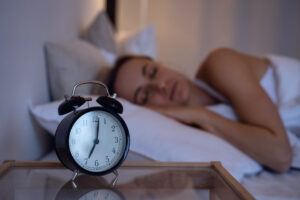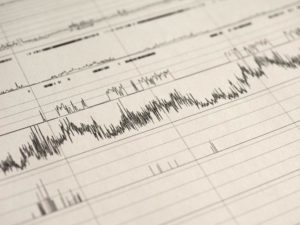Coping Strategies for Shift Work Disorder
Roughly 16% of U.S. employees work a non-traditional shift, which may include evenings and nights, early mornings, and/or rotating and split shifts. Since these shifts fall outside typical job schedules, they often require employees to focus on work at night and sleep during the day.
Shift work disorder is a circadian rhythm sleep disorder that largely affects these employees. The disorder is characterized by symptoms of insomnia and/or excessive daytime sleepiness in conjunction with a work schedule that conflicts with traditional sleeping times. Those who work night, early morning, or rotating shifts are considered particularly high-risk for the disorder.
The Psychological Effects of Shift Work Disorder
Most people who live with shift work disorder lose one to four hours of sleep during each 24-hour period. Since most adults need at least seven hours of sleep every day, this amount of sleep deprivation can incur significant sleep debt.
Insomnia symptoms are common for people with shift work disorder. These symptoms manifest in different ways depending on the nature of a person’s work schedule. In order to receive an insomnia diagnosis, the individual must also experience impairments while they are awake. Such impairments include:
- Fatigue or malaise
- Trouble concentrating, paying attention, or retrieving memories
- Irritability or mood disturbances
- Decreased motivation, energy, or initiative
Over time, these impairments can take a negative toll on your mental health and overall wellbeing. They can also impair your ability to work properly and safely, and put you at greater risk for committing errors or being involved in accidents.
In addition to insomnia symptoms, many people with shift work disorder also experience excessive sleepiness while they are awake. The inability to stay alert and focused at your job site can also have a detrimental effect on your work performance and safety, as well as your abilities to communicate with coworkers and handle stressful situations. Additionally, excessive sleepiness increases your risk of being involved in a vehicular accident due to drowsy driving during your work commute. Drowsy-driving crashes most often occur between the hours of midnight and 6 a.m. or in the late afternoon, and usually involve single drivers with no passengers.

What Are Some Coping Strategies for Shift Work Disorder?
If you are a shift worker experiencing insomnia symptoms and/or excessive daytime sleepiness, there are measures you can take to mitigate the effects of shift work disorder. At the same time, there are certain activities and behaviors to avoid in order to stay well-rested and mentally prepared for shift work.
Maintain a Relaxing Bedroom Environment
The bedroom should serve as a sleep sanctuary no matter what time you go to bed. This is particularly crucial for people who need to sleep during the day. The ideal sleep environment should be dark, relatively cool, and quiet. Make sure family members, roommates, or other cohabitants know not to disturb you during your allotted sleep time.
Attempting to sleep during the day can be difficult due to factors like daylight and outside noise. In addition to dimming the lights, you can block outside light using an eye mask or blackout curtains. If your home is located in an area that is relatively loud during the daytime, try ear plugs or a white noise machine to muffle disruptive sounds.
The best bedroom temperature for sleep is 65 degrees Fahrenheit, but 60-67 degrees is considered an ideal temperature range. Be sure to set your thermostat accordingly.
Practice Healthy Sleep Hygiene
Sleep hygiene refers to daily routines and activities that affect your sleep quality and duration. Healthy sleep hygiene involves not only a restful bedroom environment, but also relaxing pre-bedtime routines such as a hot shower or meditating. You should avoid alcohol, caffeine, and heavy meals in the hours leading up to sleep.
Another crucial aspect of healthy sleep hygiene is going to bed and waking up at the same times each day, even on your days off. This can be particularly tricky for night shift workers because they will potentially miss out on social activities and time to run errands.
If you normally work a night shift, schedule your sleep time in order to wake up close to the beginning of your next shift, rather than going to sleep immediately upon returning home. Studies have shown the “split nap” schedule is also effective. This involves sleeping for a few hours when you get home from work, then staying awake and taking a long nap that ends close to the start of your next shift.
Monitor Your Alertness at the Workplace
Those who are new to shift work or assigned a non-traditional shift with extended hours are at higher risk of committing errors or being involved in an accident on the job.
Caffeine can be helpful for keeping you awake during shift work, but moderation is important. Small amounts of caffeine every hour or two can give you a much-needed jumpstart, while larger, more sporadic amounts of caffeine may lead to a “caffeine crash.” Moderate exercise, such as a stroll outside or a visit to your office gym, can also temporarily boost your alertness and energy levels.
Napping at work may also be effective. A short nap of 15-20 minutes during one of your scheduled breaks can make you feel more refreshed and alert. People tend to be groggy after longer naps, therefore 20 minutes should be considered the maximum sleep time. Some shift workers find relief from the “caffeine nap,” which involves consuming caffeine immediately prior to your breaktime snooze. Caffeine needs about 15-20 minutes to take effect, so ideally you will wake up feeling exceptionally alert.
If you feel tired at the end of your shift, consider a brief nap in your car or a designated “nap room” at your workplace.
Seek Help if Needed
People with shift work disorder often experience fewer symptoms if they transition to a more traditional work schedule. However, this is not always the case. Speak to a physician if you think your work schedule is interfering with your sleep, especially if symptoms persist for two weeks or longer.
Your doctor may prescribe prescription sleep aids or over-the-counter sleep medications to help you get enough rest. Be sure to discuss side effects, drug interactions, and other important aspects of these sleep aids, and never take any medication without a physician’s approval.
Shift workers are also at higher risk of medical conditions such as cancer and cardiovascular disease , as well as depression. Several hormonal imbalances affecting cortisol and testosterone are also common in shift workers, which can result in adrenal insufficiency and hypogonadism respectively. Routine medical checkups can ensure you remain healthy, even if you don’t experience symptoms of shift work disorder.
References
6 Sources
-
Bureau of Labor Statistics. (2019, September). Job Flexibilities and Work Schedules Summary. (USDL-19-1691)., Retrieved December 8,2020, from
https://www.bls.gov/news.release/flex2.nr0.htm -
American Academy of Sleep Medicine. (2014). The International Classification of Sleep Disorders – Third Edition (ICSD-3). Darien, IL.
https://aasm.org/ -
Consensus Conference Panel, Watson, N. F., Badr, M. S., Belenky, G., Bliwise, D. L., Buxton, O. M., Buysse, D., Dinges, D. F., Gangwisch, J., Grandner, M. A., Kushida, C., Malhotra, R. K., Martin, J. L., Patel, S. R., Quan, S. F., Tasali, E., Non-Participating Observers, Twery, M., Croft, J. B., Maher, E., … Heald, J. L. (2015). Recommended amount of sleep for a healthy adult: A joint consensus statement of the American Academy of Sleep Medicine and Sleep Research Society. Journal of Clinical Sleep Medicine, 11(6), 591–592.
https://pubmed.ncbi.nlm.nih.gov/25979105/ -
National Highway Traffic Safety Administration. (n.d.). Drowsy Driving., Retrieved December 9, 2020, from
https://www.nhtsa.gov/risky-driving/drowsy-driving -
Lammers-van der Holst, H. M., Murphy, A. S., Wise, J., & Duffy, J. F. (2020). Sleep tips for shift workers in the time of pandemic. Southwest Journal of Pulmonary & Critical Care, 20(4), 128–130., Retrieved from
https://www.ncbi.nlm.nih.gov/pmc/articles/PMC7189699/ -
Wickwire, E. M., Geiger-Brown, J., Scharf, S. M., & Drake, C. L. (2017). Shift Work and Shift Work Sleep Disorder: Clinical and Organizational Perspectives. Chest, 151(5), 1156–1172., Retrieved from
https://pubmed.ncbi.nlm.nih.gov/28012806/










